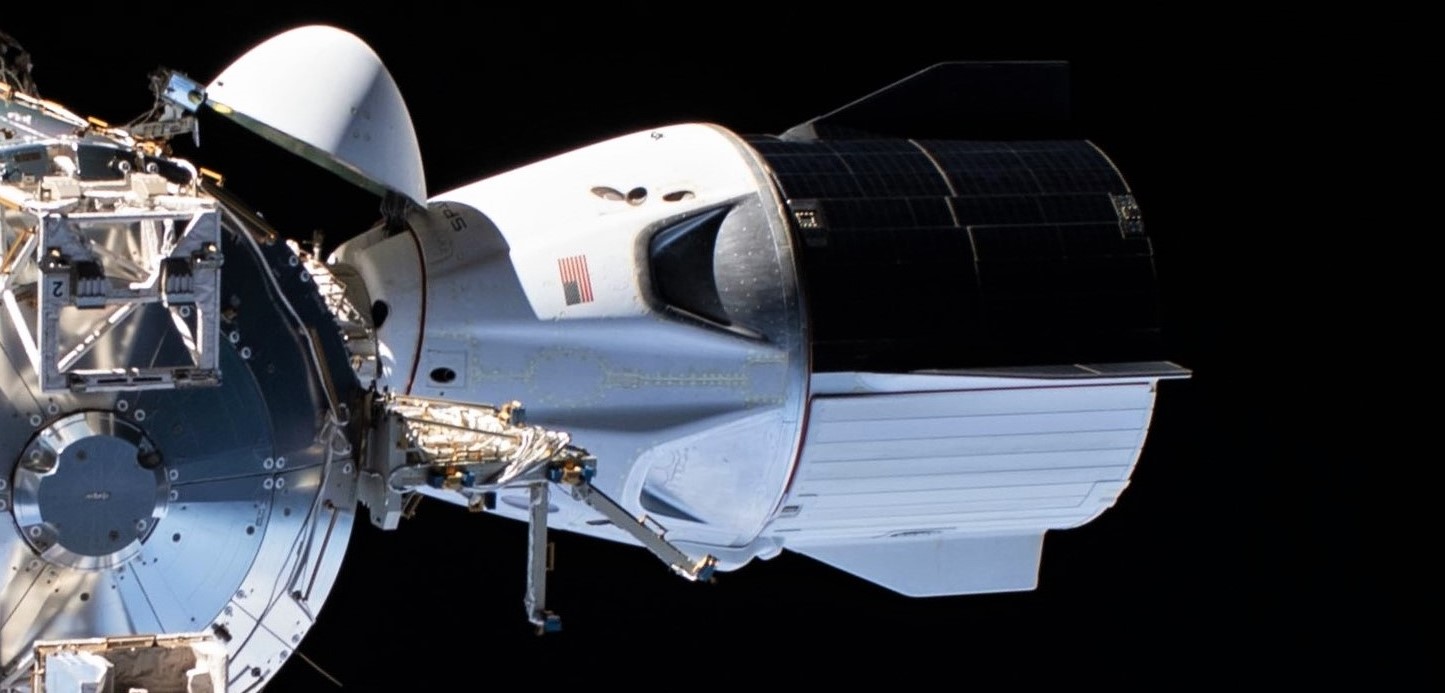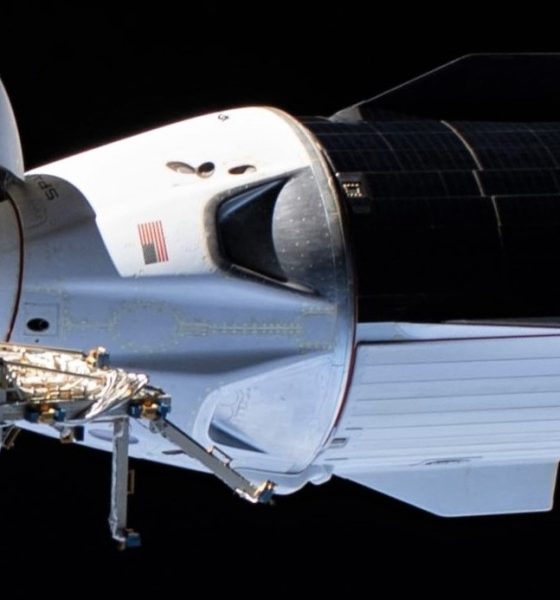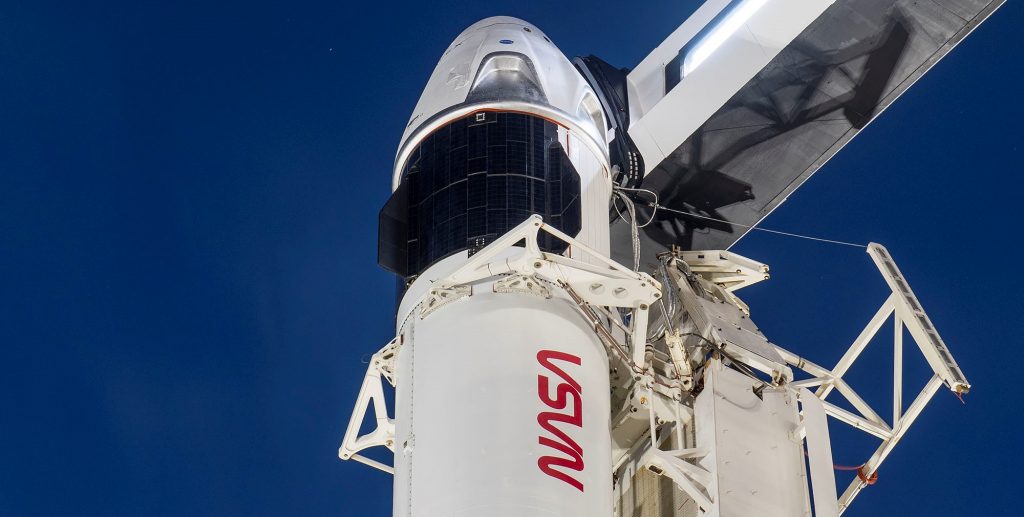

News
SpaceX Dragon spacecraft to have a continual presence in space starting this year
Days after NASA confirmed that SpaceX is on track for a Crew Dragon launch on November 14th and the first Cargo Dragon 2 launch on December 2nd, a company executive says that that back-to-back launch is a sign of things to come.
The first semi-functional Dragon spacecraft flew more than a decade ago in December 2010, followed some 18 months later by vehicle’s second orbital mission, during which SpaceX became the first private company in history to launch and berth a spacecraft with the International Space Station (ISS). Four months after that, Cargo Dragon successfully berthed with the ISS for the second time as part of SpaceX’s first NASA Commercial Resupply Services mission (CRS-1), beginning what would come to be an extraordinarily successful series of 19 operational space station resupply runs, delivering a bit less than 45 metric tons (~100,000 lb) total.
SpaceX fulfilled the entirety of its NASA CRS1 contract in April 2020, effectively retiring the first-generation Dragon spacecraft. Less than two months later, Crew Dragon – an upgraded ‘Dragon 2’ spacecraft – lifted off on its second orbital mission and astronaut launch debut, the flawless completion of which has made SpaceX the first private company in history certified to fly astronauts by a national space agency. Now, perhaps little more than two weeks apart, SpaceX is on track to attempt its first operational astronaut launch and the first launch of an upgraded Cargo Dragon spacecraft under a new NASA CRS2 cargo contract.


Speaking in a November 10th press teleconference focused first and foremost on Crew Dragon’s imminent operational launch debut, SpaceX executive Benji Reed – taking a well-earned stance of confidence – revealed some impressive details about what to expect from Dragon going forward.
“Over the next 15 months, we will fly seven Crew and Cargo Dragon missions for NASA. That means that starting with Crew-1, there will be a continuous presence of SpaceX Dragons on orbit. Starting with the cargo mission CRS-21, every time we launch a Dragon, there will be two Dragons in space – simultaneously – for extended periods of time. Truly, we are returning the United States’ capability for full launch services and we are very, very honored to be a part of that.”
Benji Reed, SpaceX – November 10th, 2020
In short, SpaceX has seven Dragon launches scheduled between November 2020 and January 2022, necessitating an average cadence of one Dragon mission every two or so months. To accomplish that feat, SpaceX will begin to delve deep into reusability, reusing both Crew and Cargo Dragons and the Falcon 9 boosters tasked with launching them. The first of those reuses is schedule as soon as March 2021, in which four astronauts will launch on a flight-proven booster, inside a flight-proven orbital spacecraft, to the International Space Station.
Meanwhile, thanks to NASA’s plans to extend the amount of time uncrewed Cargo Dragon 2 spacecraft spend in orbit at the ISS and an average of two six-month Crew Dragon missions annually, SpaceX could find itself maintaining a continuous presence in space starting as soon as November 14th. As Reed notes, that also means that every two Dragons will be simultaneously operating in low Earth orbit (LEO) every time SpaceX launches a Cargo Dragon resupply mission.
Roscosmos, Russia’s national space agency, is the only other entity on Earth that can claim a similar capability – now used to simultaneously operating multiple Soyuz crew and Progress cargo spacecraft in orbit after almost a decade spent serving as the sole bridge between Earth and the ISS. If SpaceX’s Crew-1 Crew Dragon and CRS-21 Cargo Dragon launches are successful, the private US company will effectively become the backbone of US spaceflight, almost singlehandedly reasserting the country’s position as a competitive space power.

News
Tesla is seeing a lot of momentum from young Koreans in their 20s-30s: report
From January to November, young buyers purchased over 21,000 Teslas, putting it far ahead of fellow imported rivals like BMW and Mercedes-Benz.

Tesla has captured the hearts of South Korea’s 20s-30s demographic, emerging as the group’s top-selling imported car brand in 2025. From January to November, young buyers purchased over 21,000 Teslas, putting it far ahead of fellow imported rivals like BMW and Mercedes-Benz.
Industry experts cited by The Economist attributed this “Tesla frenzy” to fandom culture, where buyers prioritize the brand over traditional car attributes, similar to snapping up the latest iPhone.
Model Y dominates among young buyers
Data from the Korea Imported Automobile Association showed that Tesla sold 21,757 vehicles to the 20s-30s demographic through November, compared to BMW’s 13,666 and Mercedes-Benz’s 6,983. The Model Y led the list overwhelmingly, with variants like the standard and Long Range models topping purchases for both young men and women.
Young men bought around 16,000 Teslas, mostly Model Y (over 15,000 units), followed by Model 3. Young women followed a similar pattern, favoring Model Y (3,888 units) and Model 3 (1,083 units). The Cybertruck saw minimal sales in this group.
The Model Y’s appeal lies in its family-friendly SUV design, 400-500 km range, quick acceleration, and spacious cargo, which is ideal for commuting and leisure. The Model 3, on the other hand, serves as an accessible entry point with lower pricing, which is valuable considering the country’s EV subsidies.
The Tesla boom
Experts described Tesla’s popularity as “fandom culture,” where young buyers embrace the brand despite criticisms from skeptics. Professor Lee Ho-geun called Tesla a “typical early adopter brand,” comparing purchases to iPhones.
Professor Kim Pil-soo noted that young people view Tesla more as a gadget than a car, and they are likely drawn by marketing, subsidies, and perceived value. They also tend to overlook news of numerous recalls, which are mostly over-the-air software updates, and controversies tied to the company.
Tesla’s position as Korea’s top import for 2025 seems secured. As noted by the publication, Tesla’s December sales figures have not been reported yet, but market analysts have suggested that Tesla has all but secured the top spot among the country’s imported cars this year.
News
Tesla FSD fleet is nearing 7 billion total miles, including 2.5 billion city miles
As can be seen on Tesla’s official FSD webpage, vehicles equipped with the system have now navigated over 6.99 billion miles.

Tesla’s Full Self-Driving (Supervised) fleet is closing in on almost 7 billion total miles driven, as per data posted by the company on its official FSD webpage.
These figures hint at the massive scale of data fueling Tesla’s rapid FSD improvements, which have been quite notable as of late.
FSD mileage milestones
As can be seen on Tesla’s official FSD webpage, vehicles equipped with the system have now navigated over 6.99 billion miles. Tesla owner and avid FSD tester Whole Mars Catalog also shared a screenshot indicating that from the nearly 7 billion miles traveled by the FSD fleet, more than 2.5 billion miles were driven inside cities.
City miles are particularly valuable for complex urban scenarios like unprotected turns, pedestrian interactions, and traffic lights. This is also the difference-maker for FSD, as only complex solutions, such as Waymo’s self-driving taxis, operate similarly on inner-city streets. And even then, incidents such as the San Francisco blackouts have proven challenging for sensor-rich vehicles like Waymos.
Tesla’s data edge
Tesla has a number of advantages in the autonomous vehicle sector, one of which is the size of its fleet and the number of vehicles training FSD on real-world roads. Tesla’s nearly 7 billion FSD miles then allow the company to roll out updates that make its vehicles behave like they are being driven by experienced drivers, even if they are operating on their own.
So notable are Tesla’s improvements to FSD that NVIDIA Director of Robotics Jim Fan, after experiencing FSD v14, noted that the system is the first AI that passes what he described as a “Physical Turing Test.”
“Despite knowing exactly how robot learning works, I still find it magical watching the steering wheel turn by itself. First it feels surreal, next it becomes routine. Then, like the smartphone, taking it away actively hurts. This is how humanity gets rewired and glued to god-like technologies,” Fan wrote in a post on X.
News
Tesla starts showing how FSD will change lives in Europe
Local officials tested the system on narrow country roads and were impressed by FSD’s smooth, human-like driving, with some calling the service a game-changer for everyday life in areas that are far from urban centers.

Tesla has launched Europe’s first public shuttle service using Full Self-Driving (Supervised) in the rural Eifelkreis Bitburg-Prüm region of Germany, demonstrating how the technology can restore independence and mobility for people who struggle with limited transport options.
Local officials tested the system on narrow country roads and were impressed by FSD’s smooth, human-like driving, with some calling the service a game-changer for everyday life in areas that are far from urban centers.
Officials see real impact on rural residents
Arzfeld Mayor Johannes Kuhl and District Administrator Andreas Kruppert personally tested the Tesla shuttle service. This allowed them to see just how well FSD navigated winding lanes and rural roads confidently. Kruppert said, “Autonomous driving sounds like science fiction to many, but we simply see here that it works totally well in rural regions too.” Kuhl, for his part, also noted that FSD “feels like a very experienced driver.”
The pilot complements the area’s “Citizen Bus” program, which provides on-demand rides for elderly residents who can no longer drive themselves. Tesla Europe shared a video of a demonstration of the service, highlighting how FSD gives people their freedom back, even in places where public transport is not as prevalent.
What the Ministry for Economic Affairs and Transport says
Rhineland-Palatinate’s Minister Daniela Schmitt supported the project, praising the collaboration that made this “first of its kind in Europe” possible. As per the ministry, the rural rollout for the service shows FSD’s potential beyond major cities, and it delivers tangible benefits like grocery runs, doctor visits, and social connections for isolated residents.
“Reliable and flexible mobility is especially vital in rural areas. With the launch of a shuttle service using self-driving vehicles (FSD supervised) by Tesla in the Eifelkreis Bitburg-Prüm, an innovative pilot project is now getting underway that complements local community bus services. It is the first project of its kind in Europe.
“The result is a real gain for rural mobility: greater accessibility, more flexibility and tangible benefits for everyday life. A strong signal for innovation, cooperation and future-oriented mobility beyond urban centers,” the ministry wrote in a LinkedIn post.








